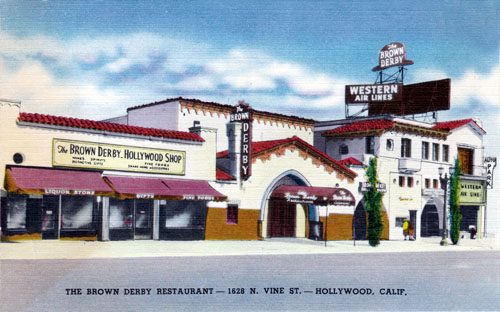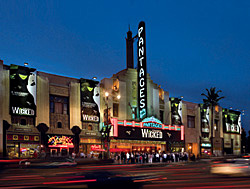Interactive map! Click on green points for more info. Click here for larger map.
Here we are, at the end of another CicLAvia season! Due to the "Celebrate L.A." mega-CicLAvia at the end of September, the normally-October anniversary "Heart of L.A." open streets extravaganza was moved to December. This 5.8-mile, scorpion-shaped route for the 28th CicLAavia is an altered and slightly-truncated route that was originally introduced at the October 5, 2014 CicLAvia, which stretched from Echo Park all the way to East Los Angeles. This time, it only goes as far east as Evergreen Avenue in Boyle Heights, but The Militant added on a couple nearby East Los points to get a better feel for the real Eastside. And this is the easternmost "Heart of L.A." CicLAvia route yet: The westernmost point is Figueroa Street. Which isn't bad, as you can experience the new My Figueroa bike infrastructure before and after the event, and relax with a drink at the Spire 73 bar at the top of the Wilshire Grand Center, where The Militant may or may not be at the end of the day.
Because the last CicLAvia was so intensive for many reasons (and because this one does not offer a convenient escape route), The Militant will NOT be conducting a live Epic CicLAvia guided tour. But he may or may do it again one day. We'll see. In the meantime, enjoy this one. See you or not see you on the streets on Sunday!
 1. El Pino
1. El PinoFolsom and Indiana streets, East Los Angeles
Also known as "El Pino Famoso," This 65-foot-tall Bunya Pine tree is a famous local Eastside landmark, demarcating the border between East Los Angeles proper (east of Indiana) and the City of Los Angeles community of Boyle Heights. - part of the original 1850 City of Los Angeles boundary! The tree was popularized by the 1993 film Blood In Blood Out, where it was depicted as a landmark between rival gang territories. The tree, which can be seen from afar, has a uniquely Boyle Heights/Eastside history: Not only does it bear a Spanish name, but it stands on the former property of a Japanese American World War II internee.
There's something about war memorial monuments that just add something to a city. Right here on the Los Angeles - East Los Angeles border at the "Cinco Puntos" (Five Points) corner are a pair of memorial monuments dedicated to Mexican Americans who gave their lives serving this country. The memorial on the south side of the street was vandalized in the Fall of 2012 when thieves removed and stole some of the plaques, presumably for scrap metal value. But in May 2013, California Assembly Speaker John Perez replaced the missing plaques. These memorials are quite the poignant scenes each May and November during Memorial and Veterans days, respectively.
Over 300,000 Angelenos are laid to rest in this 67-acre cemetery -- one of Los Angeles' oldest. The interred are a microcosm of the city itself: people of all races are buried here, as are the rich and influential (including former Los Angeles mayors and people named Van Nuys, Lankershim and Hollenbeck) to the impoverished. The cemetery also includes recently-reinterred remains of 19th-century Chinese immigrants that were discovered while construction crews dug the Metro Gold Line tunnels nearby. Due to the current drought and lack of upkeep, the cemetery hasn't lived up to its name lately, but taking a stroll through the grounds here can offer a unique history lesson.
This institution founded by the late, great Manuel Rojas and certified shrine to the burrito absolutely needs no introduction, other than to remind you that it's but a short 3-minute ride from the CicLAvia route. Hollenbeck, anyone?
Run by three generations of the Delgado Family, this handmade guitar shop has made instruments for musicians such as Andres Segovia, Jose Feliciano, Los Lobos, Charo and Ozomatli. This was the little Eastside handmade guitar shop featured on a 1995 episode of Visiting…with Huell Howser. So if you play classical, flamenco or mariachi guitar, you already know this place is amazing.
You may or may not be familiar with the local institution on Fairfax Avenue, which boasts “Since 1931.” That’s not entirely true. In 1931 brothers Ben, Max and Harry Canter opened their first delicatessen here on what was then Brooklyn Avenue near Soto Street. Following the post-war migration of Los Angeles’ Jewish community to the Westside, Ben Canter opened a new location on Fairfax Avenue, and in 1953 it moved down the street to the present location. The original Boyle Heights Canter’s closed in 1973.
This building on the corner of Breed Street and Michigan Avenue was originally the Mount Sinai Breed Street Outpatient Clinic, meant to serve the neighborhood’s large Jewish population. In 1955 the clinic moved to a location near Beverly Hills, and in 1961 it merged with Cedars of Lebanon Hospital in East Hollywood to become Cedars-Sinai Medical Center. Today, the building is the offices for L.A. Family Housing.
10. Eastside Luv
2006 (Built 1940)
1835 E. 1st St, Boyle Heights
One of The Militant's favorite hangouts in the Eastside, this bar, started by a bunch of friends who grew up in nearby City Terrace, took over the former Metropolitan bar eight years ago and updated it to a more contemporary Eastside-style flavor. Don't call it gentrification, call it gentefication.
11. Mariachi Plaza
1889
1st St and Boyle Ave, Boyle Heights
This is the new town square for Boyle Heights, anchored by the historic 1889 Boyle Hotel on the historic Cummings Block, where Mariachi musicians have been hanging out to get picked up for since the 1930s. The Kiosko, or bandstand, that sits in the plaza is actually not that historic. It was given as a gift from the Mexican state of Jalisco, who literally shipped it over in 1998 where it was assembled in place. But it only gets used once a year for the Santa Cecilia Festival around every November 21. The plaza is also home of the Metro Gold Line station of the same name, which opened in 2009. The unique lending library Libros Schmibros relocated here in 2011. This place could warrant a Militant blog post in itself -- no, an entire week of posts! Don't miss the Farmers Market events there every Friday and Sunday!
12. Simon Gless Farmhouse
1887
131 S. Boyle Ave., Boyle Heights
Back in the totally radical '80s...That's the 1880s, Boyle Heights was an open, rural area and French Basque immigrant Simon Francois Gless built a Queen Anne style house on his sheepherding farm at this location. Today, the house is a City Historic Cultural Monument and is a home that's rented out to -- Mariachi musicians! Just a few blocks west of here is Gless Street, and you might have heard of Simon's great-granddaughter -- actress Sharon Gless, who starred in the series Cagney and Lacey, which aired a century after her arrière-grand-père first settled in Boyle Heights.
13. Keiro Retirement Home/Jewish Home For The Aging
1974/1916
325 S. Boyle Ave, Boyle Heights
With Boyle Heights being a historically Jewish and Japanese community, how's this for an ultimate Boyle Heights institution? This property was originally built in 1916 as the Jewish Home for the Aging (now operating in Reseda), and in 1974, the Keiro Senior Health Care organization, basically their Japanese American counterpart. With the Hollenbeck Palms retirement home just down the street (and site of the John Edward Hollenbeck Estate, remember?) Boyle is a popular corridor for Senior Livin.'
14. Neighborhood Music School
1947 (Built 1890s)
358 S. Boyle Ave, Boyle Heights
The Neighborhood Music School is exactly what it is. But it's also a Boyle Heights institution. Originally founded over 100 years ago when it was located on Mozart Street (orchestral rimshot), the school moved to this Victorian home in 1947 where it still offers music lessons to local youth and the public can drop by on weekends to attend free recital concerts.
2006 (Built 1940)
1835 E. 1st St, Boyle Heights
One of The Militant's favorite hangouts in the Eastside, this bar, started by a bunch of friends who grew up in nearby City Terrace, took over the former Metropolitan bar eight years ago and updated it to a more contemporary Eastside-style flavor. Don't call it gentrification, call it gentefication.
1889
1st St and Boyle Ave, Boyle Heights
This is the new town square for Boyle Heights, anchored by the historic 1889 Boyle Hotel on the historic Cummings Block, where Mariachi musicians have been hanging out to get picked up for since the 1930s. The Kiosko, or bandstand, that sits in the plaza is actually not that historic. It was given as a gift from the Mexican state of Jalisco, who literally shipped it over in 1998 where it was assembled in place. But it only gets used once a year for the Santa Cecilia Festival around every November 21. The plaza is also home of the Metro Gold Line station of the same name, which opened in 2009. The unique lending library Libros Schmibros relocated here in 2011. This place could warrant a Militant blog post in itself -- no, an entire week of posts! Don't miss the Farmers Market events there every Friday and Sunday!
12. Simon Gless Farmhouse
1887
131 S. Boyle Ave., Boyle Heights
Back in the totally radical '80s...That's the 1880s, Boyle Heights was an open, rural area and French Basque immigrant Simon Francois Gless built a Queen Anne style house on his sheepherding farm at this location. Today, the house is a City Historic Cultural Monument and is a home that's rented out to -- Mariachi musicians! Just a few blocks west of here is Gless Street, and you might have heard of Simon's great-granddaughter -- actress Sharon Gless, who starred in the series Cagney and Lacey, which aired a century after her arrière-grand-père first settled in Boyle Heights.
13. Keiro Retirement Home/Jewish Home For The Aging
1974/1916
325 S. Boyle Ave, Boyle Heights
With Boyle Heights being a historically Jewish and Japanese community, how's this for an ultimate Boyle Heights institution? This property was originally built in 1916 as the Jewish Home for the Aging (now operating in Reseda), and in 1974, the Keiro Senior Health Care organization, basically their Japanese American counterpart. With the Hollenbeck Palms retirement home just down the street (and site of the John Edward Hollenbeck Estate, remember?) Boyle is a popular corridor for Senior Livin.'
14. Neighborhood Music School
1947 (Built 1890s)
358 S. Boyle Ave, Boyle Heights
The Neighborhood Music School is exactly what it is. But it's also a Boyle Heights institution. Originally founded over 100 years ago when it was located on Mozart Street (orchestral rimshot), the school moved to this Victorian home in 1947 where it still offers music lessons to local youth and the public can drop by on weekends to attend free recital concerts.
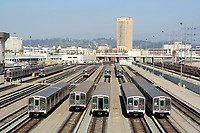 15. Metro Division 20 Subway Car Yard & Site of Old Santa Fe LaGrande Station
15. Metro Division 20 Subway Car Yard & Site of Old Santa Fe LaGrande Station1992 / 1893
320 S. Santa Fe Ave (visible from the 4th Street Viaduct), Arts District
Take a break from riding/walking/skateboarding/pogo-sticking/etc. and take a glance off the north side of the bridge from the west bank of the River. This facility is where the 104 Italian-built subway cars of the Metro Red and Purple line cars are stored, repaired, serviced and cleaned. This was also the temporary storage and repair site of the Angels Flight railway cars after the fateful 2001 accident. The Militant actually visited this facility back in May 1992.
The subway cars are also serviced on the site of the old Santa Fe Railway La Grande Station (hence the name of the street) that was on Santa Fe and 2nd. Built in 1893, it was precisely where midwestern transplants arrived in Los Angeles after paying their $1 train ticket from Chicago. In 1933, the landmark dome was damaged by the Long Beach Earthquake and subsequently removed. In 1939, it was rendered obsolete by the opening of the new Los Angeles Union Passenger Terminal a few blocks north.
16. Metro 1st St /Central Station Site
2021
1st Street and Central Avenue, Little Tokyo
Prior to 2014, this lot was home to the popular Señor Fish taco joint (formerly the site of '70s-'80s punk venue Atomic Cafe) and Weiland Brewery Restaurant (which opened replacement locations in Echo Park and Uptown Long Beach, respectively). Both buildings were demolished in to make room for this new Metro subway station for the Regional Connector project, a new subway under Downtown Los Angeles that will re-align three light rail lines into two and provide continuous, transfer-free service from Azusa to Long Beach and East Los Angeles to Santa Monica. Although Little Tokyo already has a Gold Line station just yards away, that will be demolished and the station replaced with a new underground facility where the current construction activity exists. It's rather fascinating, and it's one way Little Tokyo will more resemble Big Tokyo. The businesses around the station have been impacted by construction, so make sure you support them, not only during CicLAvia but after!
2021
1st Street and Central Avenue, Little Tokyo
Prior to 2014, this lot was home to the popular Señor Fish taco joint (formerly the site of '70s-'80s punk venue Atomic Cafe) and Weiland Brewery Restaurant (which opened replacement locations in Echo Park and Uptown Long Beach, respectively). Both buildings were demolished in to make room for this new Metro subway station for the Regional Connector project, a new subway under Downtown Los Angeles that will re-align three light rail lines into two and provide continuous, transfer-free service from Azusa to Long Beach and East Los Angeles to Santa Monica. Although Little Tokyo already has a Gold Line station just yards away, that will be demolished and the station replaced with a new underground facility where the current construction activity exists. It's rather fascinating, and it's one way Little Tokyo will more resemble Big Tokyo. The businesses around the station have been impacted by construction, so make sure you support them, not only during CicLAvia but after!
17. Site of Quaker Dairy, Original Little Tokyo Restaurant
1890
304 E. 1st St., Little Tokyo
1890
304 E. 1st St., Little Tokyo
On the southeast corner of 1st and San Pedro streets once stood the
Quaker Dairy, a restaurant started on this site in 1890 by Sanshichi
Akita, an immigrant from Japan. Though preceded five years earlier by
another restaurant on First St (location unknown), this is the oldest
traceable location of a Little Tokyo business. By the end of the 19th
century, there were over 16 Japanese-owned restaurants in this stretch
of 1st Street, creating what we know as Little Tokyo.
 18. Los Angeles Sister Cities Monument
18. Los Angeles Sister Cities Monument1987
1st and Main streets, Downtown
On the northeast corner of 1st and Main streets stands a pole bearing signs (in the "Blue Blade" style, no less) for every one of Los Angeles' 25 Sister Cities, each pointing towards their location. The signs range from Lusaka, Zambia (the farthest sister city, 10,017 miles) to Vancouver, Canada (the nearest, 1,081 miles) and everywhere in between. Nagoya, Japan is Los Angeles' oldest sister city (1959); Yerevan, Armenia is the newest (2007). Los Angeles, an Olympic host city (1932, 1984) also has that in common with sister cities Athens (1896, 2004), Berlin (1936), Mexico City (1968) and Vancouver (2010). Okay, the Militant is just filling up this paragraph with mindless trivia.
19. U.S. Federal Courthouse
2016
145 S. Broadway, Downtown
This big glass cube that is responsible for blocking your view of the
Downtown Los Angeles skyline from Grand Park used to be a hole in the
ground was once the site of the Junipero Serra State Office
Building, which was damaged in the 1994 Northridge Earthquake and abandoned and demolished in 1998.
This 10-story, 400-foot-tall
U.S. Federal Courthouse building (don't we already have a few of
those?), designed by Skidmore Owings and Merrill, opened in 2016. Do check out the embossed bald eagle situated over the main entrance on 1st Street.
NAVIGATIONAL NOTE:
• If heading north to Chinatown, skip to #27.
• If heading north to Chinatown, skip to #27.
20. Bradbury Building
1893
304 S. Broadway, Downtown
A building that's famously meh on the outside, but OMG from the inside, this building has been featured in movies from Chinatown to Blade Runner to 500 Days of Summer. Designed by Sumner Hunt and modified by George Wyman, this 5-story structure was designed to look like the 21st century from 19th century eyes. Despite the ahead-of-its-time design, this building has nothing to do with sci-fi author Ray Bradbury, but was named after developer and 1800s rich dude Lewis Bradbury.
21. Biddy Mason Park
1991
331 S. Spring St (entrance on Broadway), Downtown
Born as a slave in Georgia 200 years ago, Bridget "Biddy" Mason was a renaissance woman of her time. Having followed Mormon settlers west, she gained her freedom when California became a slavery-free Union state. As a nurse, she founded the first child care center in Los Angeles and later became a lucrative property owner and philanthropist, having founded the First AME Church, now a major institution in Los Angeles' African American community. She died in 1891 and was buried at ...Evergreen Cemetery (which you might have also seen earlier...see how things all tie together?). A century after her passing, this mini-park in DTLA, on the site of her house, was built and dedicated.
22. Broadway-Spring Arcade Building
1924
541 S. Spring St, Downtown
This unique building is actually three, opened in 1924 on the site of Mercantile Place, a 40-foot street cut between 5th and 6th streets connecting Broadway and Spring. Mercantile Place was a popular shopping and gathering locale in the early 1900s. Having fallen into decay by the 1970s, it was recently renovated and is now famous for, of all things, vendors selling rock band t-shirts. It also becomes an artistic venue during the DTLA ArtWalk. And The Militant probably doesn't need to mention that this building is home to the DTLA Guisado's.
 23. St. Vincent Court
23. St. Vincent Court1868
St. Vincent Ct and 7th Street, Downtown
You'd hardly knew it was there, but this alley nestled between Broadway and Hill (blink and you'll miss it!), with its decorative brick pavement and European decor, seemingly belongs to another world. Originally the site of a Catholic college that was the predecessor of today's Loyola Marymount University, today it's a unique food court featuring Armenian and Middle Eastern eateries. The Militant calls it, "Littler Armenia." Check out this Militant Angeleno post on St. Vincent Court from 2008 for more info!
24. Diamonds Theatre (Warner Theatre & Original Pantages Theatre)
1920
401 W. 7th Street, Downtown
This jewelry retail mart is actually a re-purposed theatre that was the original Pantages Theatre (remember from the last CicLAvia?) opened in 1920 by Greek American entertainment magnate Alexander Pantages for Vaudeville productions. Designed by B. Marcus Priteca (who also designed today's Pantages Theatre in Hollywood), it was sold in 1929 and eventually became the Warner Theatre, screening motion pictures from the WB during the days when the movie studios ran their own theatres. The theatre closed down in 1975 and became a jewelry mart in 1978.
25. The Bloc (Formerly Broadway Plaza/Macy's Plaza)
1973
7th Street between Flower and Hope streets, Downtown
A poster child for change in Downtown, this shopping center, originally built in 1973 and designed by Charles Luckman & Associates as the first suburban-style mall in DTLA combined an indoor (though massively truncated) indoor galleria, a hotel and a 32-story office building. Initially known as Broadway Plaza, named after the old upscale Southern California department store anchor tenant, its name was changed to Macy's Plaza in 1996 after The Broadway merged with the NYC-based equivalent Macy's. Its blocky, street-unfriendly design was derided by many, especially in an era where the outdoor mall format pioneered by Santa Monica's Third Street Promenade, and Rick Caruso's faux-urban monstrosities (and more recently, the newly-opened The Village at Westfield Topanga), so in 2013 it was re-conceptualized as "The Bloc" and currently stands as a work-in-progress, (which also features a direct entrance to the 7th Street/Metro Center subway station).
401 W. 7th Street, Downtown
This jewelry retail mart is actually a re-purposed theatre that was the original Pantages Theatre (remember from the last CicLAvia?) opened in 1920 by Greek American entertainment magnate Alexander Pantages for Vaudeville productions. Designed by B. Marcus Priteca (who also designed today's Pantages Theatre in Hollywood), it was sold in 1929 and eventually became the Warner Theatre, screening motion pictures from the WB during the days when the movie studios ran their own theatres. The theatre closed down in 1975 and became a jewelry mart in 1978.
25. The Bloc (Formerly Broadway Plaza/Macy's Plaza)
1973
7th Street between Flower and Hope streets, Downtown
A poster child for change in Downtown, this shopping center, originally built in 1973 and designed by Charles Luckman & Associates as the first suburban-style mall in DTLA combined an indoor (though massively truncated) indoor galleria, a hotel and a 32-story office building. Initially known as Broadway Plaza, named after the old upscale Southern California department store anchor tenant, its name was changed to Macy's Plaza in 1996 after The Broadway merged with the NYC-based equivalent Macy's. Its blocky, street-unfriendly design was derided by many, especially in an era where the outdoor mall format pioneered by Santa Monica's Third Street Promenade, and Rick Caruso's faux-urban monstrosities (and more recently, the newly-opened The Village at Westfield Topanga), so in 2013 it was re-conceptualized as "The Bloc" and currently stands as a work-in-progress, (which also features a direct entrance to the 7th Street/Metro Center subway station).
26. Wilshire Grand Center
2017
900 Wilshire Blvd, Downtown
On this site rises the new Wilshire Grand Center, Los Angeles' (and the West's -- suck on it, Transbay Tower SF!) tallest building at 73 stories and 1,100 feet (kinda sorta, there's a spire, you see...). Opened on June 23, it is the city's only modern skyscraper without a flat roof, the only Los Angeles building since Hollywood's Capitol Records tower in 1956 to feature a spire, the first skyscraper anywhere to sport a mohawk, and it also has its own irreverent Twitter account. ;) Owned by Korean Air (hence the red and blue taeguk LED logo), the tower houses the 900-room Hotel Intercontinentalwith its 70th-floor Sky Lobby and the unique Spire 73 skybar, with wonderful views of the south and west (the sunset vista from here is not to be missed). The building's construction site was the location of "The Big Pour" - which lasted from February 15 -16, 2014, where 21,200 cubic yards (81 million pounds) of concrete for the tower's foundation were continuously poured - earning it a Guinness World Record for that feat. Before the skyscaper, the site was home of the Wilshire Grand Hotel, formerly (in reverse chronological order) the Omni Hotel, Los Angeles Hilton, Statler Hilton and Statler Hotel.
• North Spur to Chinatown:
2017
900 Wilshire Blvd, Downtown
On this site rises the new Wilshire Grand Center, Los Angeles' (and the West's -- suck on it, Transbay Tower SF!) tallest building at 73 stories and 1,100 feet (kinda sorta, there's a spire, you see...). Opened on June 23, it is the city's only modern skyscraper without a flat roof, the only Los Angeles building since Hollywood's Capitol Records tower in 1956 to feature a spire, the first skyscraper anywhere to sport a mohawk, and it also has its own irreverent Twitter account. ;) Owned by Korean Air (hence the red and blue taeguk LED logo), the tower houses the 900-room Hotel Intercontinentalwith its 70th-floor Sky Lobby and the unique Spire 73 skybar, with wonderful views of the south and west (the sunset vista from here is not to be missed). The building's construction site was the location of "The Big Pour" - which lasted from February 15 -16, 2014, where 21,200 cubic yards (81 million pounds) of concrete for the tower's foundation were continuously poured - earning it a Guinness World Record for that feat. Before the skyscaper, the site was home of the Wilshire Grand Hotel, formerly (in reverse chronological order) the Omni Hotel, Los Angeles Hilton, Statler Hilton and Statler Hotel.
• North Spur to Chinatown:
1910
Northeast corner of Broadway and 1st Street, DowntownThis longtime empty lot, previously identified in this CicLAvia tour as the foundation of a state office building condemned after the 1971 Sylmar Earthquake has some additional history. It was recently dissevered to be the location of the 1910 bombing of the (then) Los Angeles Times building, which happened 104 years ago this week. The dynamite bombing was discovered to have been the work of Ortie McManigal and brothers John and James McNamara, all affiliated with the Iron Workers Union, in what was meant to protest the newspaper's staunchly anti-union practices. 21 people died when the 16 sticks of dynamite exploded just outside the building at 1:07 a.m. on October 1, 1910, the explosion was exacerbated by natural gas lines which blew up a large section of the building. The Times since built a new building in its place, and later relocated across 1st Street to its current location. Today, the lot is being readied for an expansion of Grand Park.
28. Site of Court Flight
1904 (demolished 1943)
Broadway between Temple and Hill streets, Downtown
With Angels Flight fiiiiiiiiiinally up and running again (fingers crossed), it's time to pay tribute to the city's other funicular, its cousin to the northeast, Court Flight. Built in 1904, it went up the northern end of Bunker Hill and was next to a former road called Court Street, hence its name. Even shorter than its more famous cousin at 200 feet, it ran steeper at a height of 200 feet. It was burned by a fire in 1943 and never reconstructed. The hill was eventually chipped away. The north side of the stairways going up to the Court of Flags (wonder if that was intentional there) in today's Grand Park is the precise location of ol' Courty.
29. Hall Of Justice
1926
Temple Street and Broadway, Downtown
No, you won't find Superman or any of the Super Friends here. But this building, the oldest surviving government building in the Los Angeles Civic Center, was built in the mid-1920s as the original Los Angeles County Courthouse and Central Jail (which once housed the likes of Busy Siegel, Sirhan Sirhan and Charles Manson), as well as the headquarters for the Sheriff's Office, the District Attorney and the County Coroner. This Beaux Arts-style building was designed by Allied Architects Association, an all-star team of local architects put together to design publicly-funded buildings. The building is currently undergoing a major renovation project to modernize the facilities and repair damage from the 1994 Northridge Earthquake. It re-opened in 2015 as a LEED Gold Certified building (gotta be sustainable, y'all) with the return of the Sheriff's and District Attorney's offices.
1957
451 N. Hill St, Downtown
Way, way, waaaaay back before we had tall building and freeways, Downtown Los Angeles (well Los Angeles, period back then) had a bunch of hills, Bunker Hill being the most famed one. There was also Fort Hill, the site of a Mexican-American War encampment. On July 4, 1847 the facility was called Fort Moore (and the hill Fort Moore Hill), after Captain Benjamin D. Moore of the U.S. 1st Dragoons regiment, who was killed six months earlier in a battle near San Diego. The 1st Dragoons and the Mormon Batallion established the new fort and raised the U.S. flag during the first-ever observed Independence Day in Los Angeles. This event was immortalized in a bas-relief stone monument made in the 1950s. Speaking of forts, the very street you're riding (or walking, or skating, or scootering, or stand-up-paddling, or pogo-sticking) was once called "Fort Street," which inevitably led to directional problems some six blocks south of here. The monument also includes a fountain, which was shut off in 1977...due to the drought at the time.
So where's the actual hill, you ask? It was bulldozed away in the late 1940s to make room for the 101 Freeway (is this a recurring theme for this CicLAvia or what?!)
2001
Broadway and Cesar E. Chavez. Avenue, Chinatown
Designed to be the symbolic entrance to Los Angeles' Chinatown District, The Chinatown Gateway Monument, a.k.a. the Twin Dragon Towers Gateway, depicts two dragons grabbing at a central pearl, which symbolizes luck, prosperity, and longevity. The 25-foot-tall structure was put up in 2001 and occasionally emanates steam coming from the dragons' mouths. Unlike Anglo dragons, the creatures in Chinese folklore are the good guys, meant to scare away evil spirits.
32. Buu Dien
c. 1990s
642 N. Broadway (Facing New High St, south of Ord), Chinatown
If you're ever in some TV trivia contest on your way to being a millionaire and the host asks you, "What is the Militant Angeleno's favorite Vietnamese banh mi place West Of The Los Angeles River (WOTLAR)?" you won't need to call a lifeline, because the answer is Buu Dien. When the Militant has only $4 in his pocket and wants to get a meal in Downtown, this is his go-to joint. A literal hole in the wall in every regard, this place serves bomb-ass (do people still use that phrase) Viet sammiches for less than $3 a pop. And the bread is awesome. And nice and warm. Plus they also serve up spring rolls, desserts, pastries, Vietnamese coffee and pho (never had it here yet, but The Militant's favorite pho WOTLAR is Pho 79 just up the street). People complain about parking in his micro-mini mall, but this is CicLAvia!
33. Capitol Milling Co.
1883
1231 N. Spring St, Chinatown
One of the last visible vestiges of Los Angeles' agricultural industry, this family-owned flour mill operated from 1831 to 1997, before moving its operation to a much larger facility in Colton. The facility that still stands today was built in 1883. The mill supplied flour to clients such as Ralphs, Foix French Bakery and La Brea Bakery. In 1999, the family-owned operation was purchased by industry giant Con-Agra Co.
The historic building, built even before the railroads arrived in Los Angeles, still has a horse-tethering ring, back to the days when grain was hauled by horse carriage from farms in the San Fernando Valley. The property is currently being adaptively reused into retail and creative office space.
34. Old (New?) Chinatown Central Plaza
1937
Gin Ling Way between Broadway and Hill, Chintown
The new northern terminus of CicLAvia is no stranger to public events; it was made for them. In the Summer it hosted three very popular Chinatown Summer Nights events. But don't let the "Old Chinatown" neon sign fool you -- This is actually Los Angeles' new Chinatown, which dates back to the 1930s. The real Old Chinatown was several blocks south, where a thriving community of Cantonese-speaking immigrants lived near the river, north of Aliso Street. Of course, they were kicked out in the early '30s to make room for Union Station. So they moved a few blocks north, in the former Little Italy, and they've been there ever since. Well, not really, since some of them moved east to the San Gabriel Valley and were supplemented with Mandarin-speaking immigrants from Taiwan and Mainland China. But you get the idea.
Happy CicLAvia, Los Angeles! Enjoy and STAY MILITANT!

.JPG?itok=lG_AsFbm)





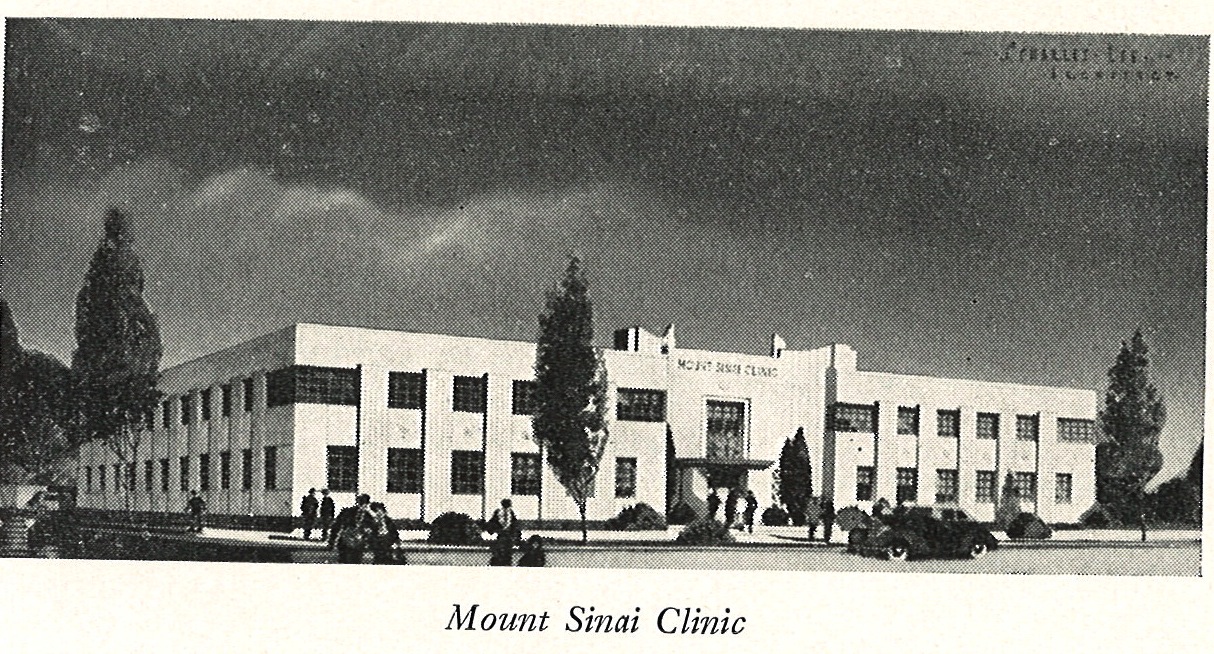










.jpg/1024px-Los_Angeles_Times_building%2C_after_the_bombing_disaster_on_October_1%2C_1910_(CHS-5728).jpg)
/cdn.vox-cdn.com/uploads/chorus_asset/file/4396681/00012812.0.jpg)


:max_bytes(150000):strip_icc()/KMD09Chinatown_001xl-56e89b6a5f9b5854a9f99528.jpg)




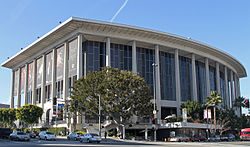



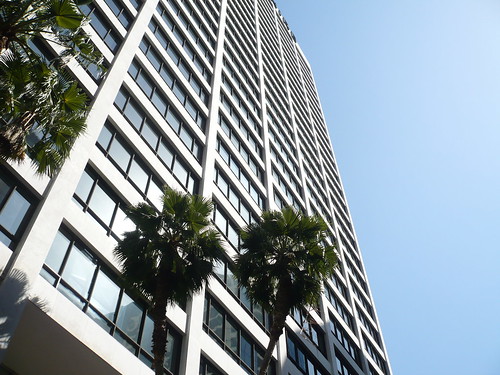





















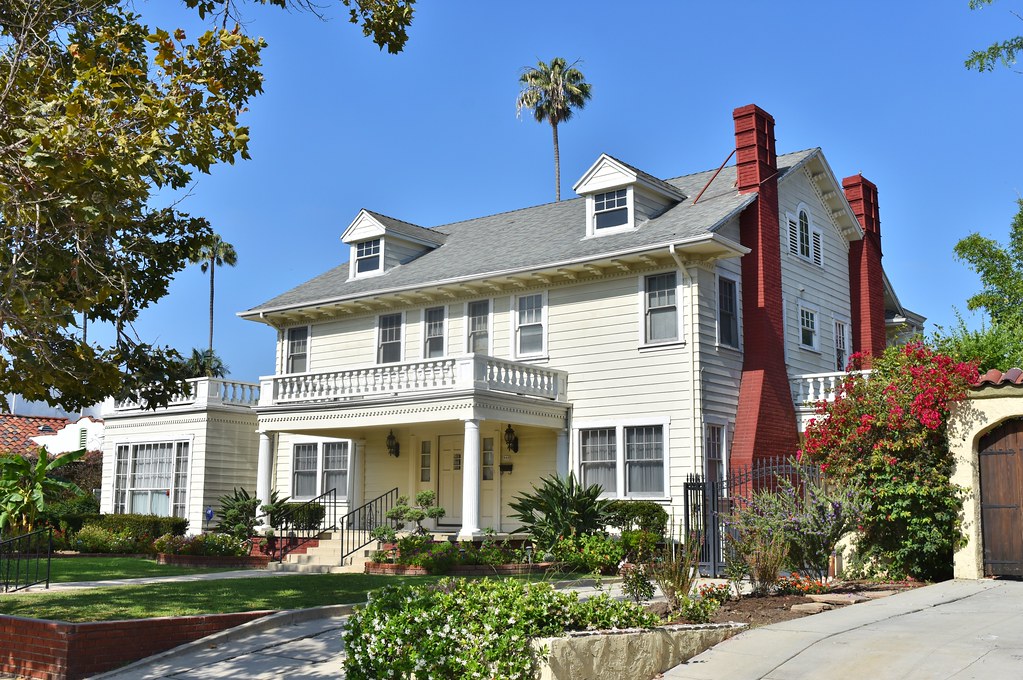

:format(webp):no_upscale()/cdn.vox-cdn.com/uploads/chorus_asset/file/16362564/gyQ4CEbU.jpeg)



